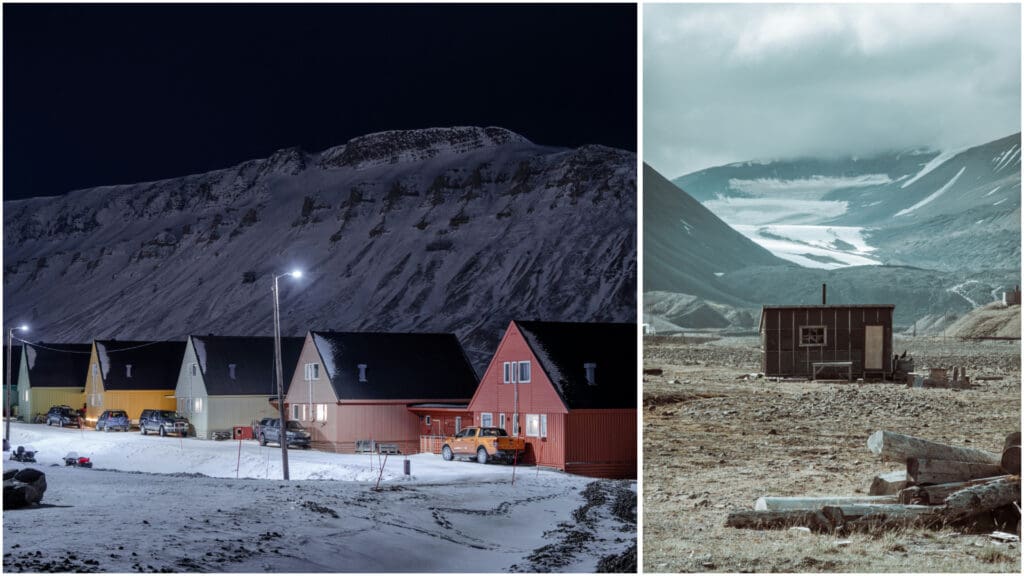It’s been a few weeks since Digital Extremities—my short story collection—was released. The original conceit behind this collection was: “what would a cyberpunk setting look like in rural towns and remote places?” Rather than spend our time in massive cities like those in Neuromancer or Cyberpunk 2077, I wanted to explore something a bit different; a futuristic setting that more closely resembled the places that I grew up in.
But first—in case you haven’t seen it yet—what is this book about?
A collection of eight stories, Digital Extremities shines a spotlight on ordinary people in a callous yet hopeful future. Set across small towns and remote islands, where neon flickers against old buildings and oaks, this collection paints a unique view of a traditionally cyberpunk setting.
In 2089, a woman miscarries and seeks a way to find peace amidst overwhelming grief. Years later, a young man must find a way to pay rent outside of his job at the glassblowing studio. A pair of students, excited to go to college, install new hardware that promises to improve their cognitive functions. A private investigator searches for a missing child who has a reputation for embarking on risky adventures. Each tale is shaped by love, loss, and perseverance, weaving a vision of life outside of the megacities.
The first story I wrote for Digital Extremities takes place in Burlington, Vermont. It’s the largest city in the state, but overall quite small with a current population of just about 44,500 as of 2022. For comparison, Boston has about 650,000 residents, and New York City has over eight million.
I figured it would be fun to chat a bit about these places as they exist today, and some of the interesting ways they were translated into science fiction / cyberpunk for this book. Consider it a little behind-the-scenes for those of you who have already read the book, or a preface for those who haven’t (this is all spoiler-free, btw).

1. Burlington, U.S.
As I previously mentioned, we begin in the city of Burlington, Vermont, which is nestled into the Champlain Valley. The city prides itself on being forward-thinking, a patron to the arts, and is culturally tied to the outdoors. One doesn’t have to travel far to find a great place to get on the lake or ski down the mountains.
In Digital Extremities, during the late 21st century, Burlington has become a kind of refuge for those impacted by flooding along the coast. Sayra, one of the main characters in “Alone / Together,” hails from Long Island. She moved into the mountains rather than continue enduring the floods that at this point are characteristic of all coastal regions.
However, that also means the city of Burlington has grown far beyond the population it was designed for. Even today, there are frequent conversations here about a lack of housing. That issue has only gotten worse in Digital Extremities. New homes and businesses are built upon the old, stacking them in a strange mix of architecture from the 20th and 21st centuries—our present-day past and future. The result is something of a collage. This vision of Burlington wrestles with wanting to maintain a small-town community while being dragged into its new role as a small metropolis.

2. Hemmingford, Canada
I grew up near Hemmingford, and visited a few times. The Quebécquois village has a current population of about 1,000, with most of the surrounding area taken up by forests or farmland. They grow local fruits, make maple syrup, and even have a few wineries.
When writing the Digital Extremities, I wanted some examples of places that resisted change. Not every community wants or uses all of the things that make this collection science fiction. A small farm town like this felt like a great choice to show that.
The people of Hemmingford—in Digital Extremities—actively resist those who embrace technology that changes one’s body. They’re not luddites. They use advanced technologies on their farms all the time, but those tools remain decidedly separate from those who use them. When one of their own returns with new body mods installed in “Brand New Eyes,” they struggle to accept her back in the community.

3. Portland, U.S.
Portland, Maine, is one of the largest cities in Digital Extremities, currently home to around 68,000 people. The city has a strong tourism industry thanks to its coastline, fresh seafood, and a deep history. Portland is also home to the Abyssinian Meeting House, one of the oldest in the country, which once held an anti-slavery bookshop.
Where Burlington has changed in the book, and Hemmigford hasn’t, Portland takes a slightly different path. The aforementioned floods have taken their toll in Digital Extremities and flooded parts of the city. It’s recovering, but the population has actually decreased over the years.
Portland is thus an example of how—despite advanced technologies and plenty of forewarning—some places just won’t react quickly enough to climate change. We’re seeing some of this even today. Maine Public published a story in 2023 about how the state’s island communities are already struggling with flooding, and the Portland Press Herald reported in 2024 that sea levels on Maine’s coast may rise up to 3.2ft (0.98m) by 2100, which is around when this story takes place.
There’s a larger conversation that we could have about all of this, but in “Buying Time” the floods are just part of daily life. They don’t come up much. Instead, the story focuses on the main character’s family and financial struggles—and how one might just solve the other.

4. Punta Loyola, Argentina
Punta Loyola, Argentina, doesn’t really exist today—from what I can tell. It is on the map, but only insofar as it is a place near the much larger city of Río Gallegos. Finding any details on Punta Loyola’s population is difficult. When looking at the map, all one will find is a mine, some corporate buildings, and a campground.
In Digital Extremities, I was inspired by some of the old mining towns I’ve visited: places that were built on a single industry which erected small communities to house its workers and their families. In this Punta Loyola of the future, a town of around 6,000 people has sprung up around a new industry to export ice from Antarctica to the rest of the world—and many of the boats run through the town’s port. Because of that, everything in Punta Loyola and all of its residents rely on the success of the ice trade.

5. Wawa, Canada
Wawa, Onterio (formerly Michipicoten), is a small town off the Trans-Canada Highway with about 3,000 residents. It’s a destination for fishermen, photographers, and anyone seeking a retreat. One of its most famous landmarks is the 28ft (8.53m) tall Wawa Goose, inspired by the town’s namesake. “Wawa” means “wild goose” or “land of the big goose” in Ojibwe.
The goose only makes a small appearance in Digital Extremities, however geese appear in small ornaments and in the skies throughout this story.
In “36 Broadway Avenue,” Wawa embraces its tourist industry via a fictional festival that I invented to showcase some of the town’s unique arts. Things don’t quite go as planned, however, and the event quickly becomes a tragedy.
You can read the beginning of this story on FanFiAddict for free! Read the excerpt of “36 Broadway Avenue.”

6. Longyearbyen, Norway
Before I knew what story I wanted to tell, I knew the title of this one: “The Beast of Longyearbyen.” Seriously, how could I not write that story?
Longyearbyen has long been a fascinating place to me. It’s a Norwegian town of about 2,400 people on the northern edge of civilization, with a complicated history. The town has just one grocery store, a small university with 300 students, and is located near the Svalbard Global Seed Vault. It also lies within the Arctic Circle, which means that Longyearbyen gets several months of sunlight during the summer—and no sun at all for several months during the winter.
In Digital Extremities, the town has turned into a proper city. Global warming has made it easier to live there, and Longyearbyen has expanded dramatically, reaching around the bay and climbing up the mountains around it. Old abandoned towns like Pyramiden have also been resuscitated. The archipelago is still a wilderness, but much less so within its urban centers.
In “The Beast of Longyearbyen,” a reporter visits to investigate some odd financial reports coming from a megacorp based there. However, as Kanan digs into what’s going on, rumors about a deadly beast emerge. He’s inclined not to believe any of it, but the beast is all anyone seems to be able to talk about.

7. Dandridge, U.S.
Dandridge is a small town in Tennessee with a population of about 3,500. It rests on the shore of Lake Douglas, with a collection of historic buildings that date back to the early 19th century. One—Shepard’s Inn—was a rest stop for US presidents Andrew Jackson, James K. Polk, and Andrew Johnson. I never got a chance to visit Dandridge, but I lived near the town for a few years. It was a fun opportunity to write about that area.
Like Hemmingford, not much has changed in Dandridge. In Digital Extremities, Kristen lives and works in Knoxville, frequently visiting her father in Dandridge. Between the two, we get glimpses of the city and Smoky Mountains.

8. Civita di Bagnoregio, Italy
Civita di Bagnoregio is a 2,500 year-old Etruscan town built upon a hill in central Italy. However, over the years, that hill has been eroded away and the town is now at risk of being destroyed. It is often called “the dying city.” Today it is home to no more than a dozen locals and about twenty cats. The rest of the rooms are taken by tourists eager to visit before the town is lost forever.
This is another situation in which I knew the setting long before I knew what story to tell here. It went through many iterations, but eventually I settled on a fun little tale about a private detective.
In Digital Extremities, a new city—Muro Etrusche—has been built around the civita. It was made with retaining walls in the center to contain the eroding hill that the old town is built upon, protecting it from further damage. This was one of my favorite settings for the book, as it allowed me to have a story in a modern city and an ancient village which was just an incredibly fun pairing to work with. We get to see quite a bit of it, too. David, the detective, walks the streets looking for a young boy who has gone missing, and briefly helps his wife investigate her own case.

Get Digital Extremities
And that’s all of the locations in Digital Extremities! If you’re interested in reading more, you can grab a copy of the book right now at most major retailers.
Amazon | Apple Books | Barnes & Noble | Kobo | Campfire (The Campfire version contains bonus content & artwork) and other retailers. Paperbacks are available at Amazon and B&N!
Follow Adam on Twitter, Threads, Instagram, or join his newsletter for news and updates about Digital Extremities, or visit his website.




Leave a Reply